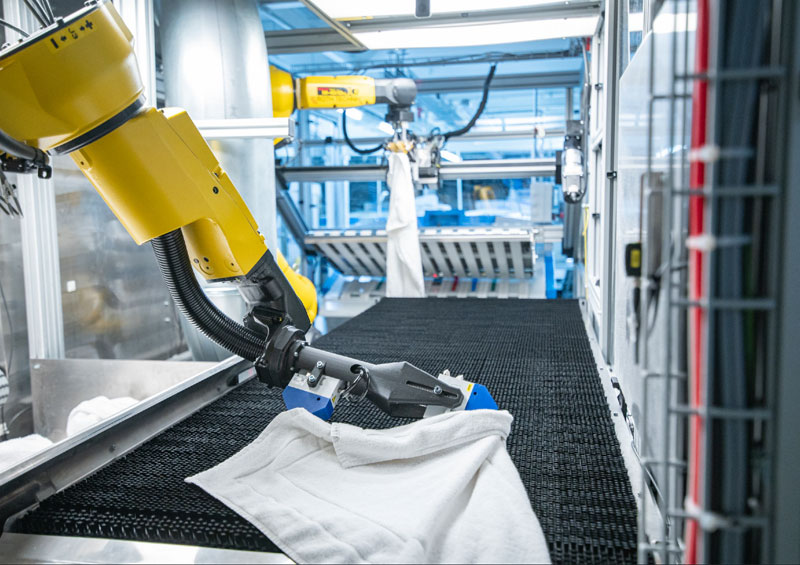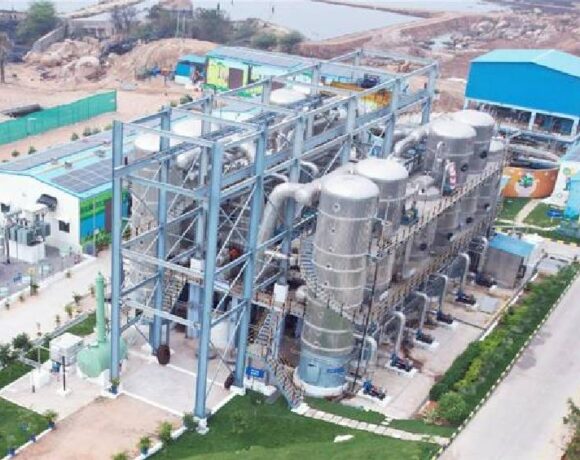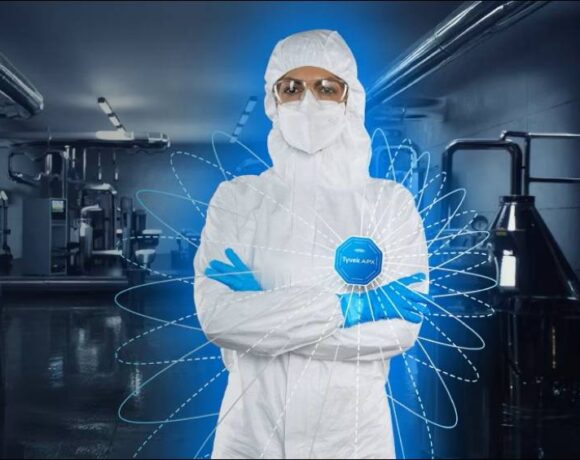Robot Reduces Challenges In Industrial Laundries

Sewts GmbH, a German tech startup, designs autonomous robots that handle textiles, like clothing, and anticipate how they behave using 2D and 3D cameras.
As is well known, the global textile and garment industry faces several challenges that hinder production, like labour and equipment shortages.
“While moving production of garments to Europe, brands will be able to address some of the supply chain issues, but it will present additional labour costs,” a Robot Report stated.
Sewts hopes to alleviate these issues and has set its sight on a particular application of large industrial laundries.
While many processes at industrial laundries are already automated, like the folding of garments, workers are still needed to manually spread out the laundry and feed it without creases into the machine, which is a monotonous and strenuous task, that has a big impact on production costs.
Sewts’ robotic system – Velum can help alleviate these issues by automating individual steps, like sorting dirty textiles or inserting laundry into folding machines, with cameras guiding Sews robots with help of images to do the work
Traditionally, garments have been a challenge for robots to handle because of its malleability and available software systems and conventional image processing, typically have limits when it comes to easily deformable material, limiting the abilities of commercially available robots and gripping systems.
The Velum robotic system is able to analyse dimensionally unstable materials like textiles and handle them, which means Velum can feed towels and similar linen made of terry towel fabric easily and without creases into existing folding machines.
This software combines commercially available robots, grippers, and cameras into one intelligent system. Velum’s multi-camera system uses the Ensenso S10 3D camera and models from the uEye CP camera series.
These cameras are crucial for the system, as the robot needs to identify, both in 2D and in 3D, interesting features and gripping points on the textiles that are fed into the system after washing and drying.
“We match the images from the 2D and 3D cameras to have a higher 2D resolution together with the 3D data. So we use the respective advantages of the 2D camera, in this case the higher resolution, and the 3D camera, i.e. the precise depth data,” Tom Doerks, co-founder and CTO at Sewts, said.
Sewts has developed AI software to process the data supplied by the cameras and this software uses features like the course of the seam and the relative position of seams to analyse the topology of the textiles.
The program classifies these features according to textile type and class, and then translates these findings into robot commands.
“AI is at the core of our technology. Intelligent algorithms are needed to build adaptive systems that can cope with non-deterministic automation processes. That’s why we use the latest findings from AI research, refine them for our needs and finally put them together as a big whole,” Till Rickert, co-founder and CPO at Sewts, said.














